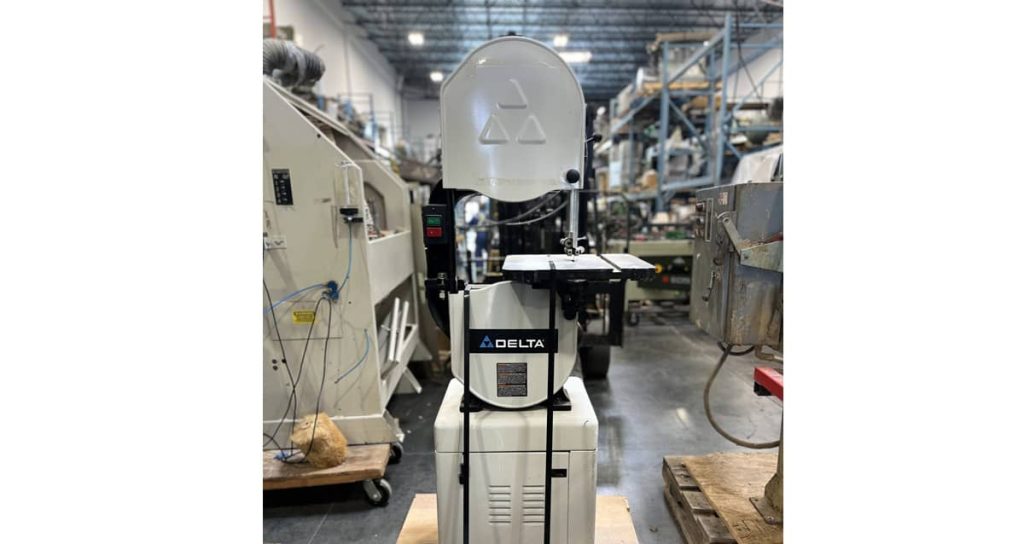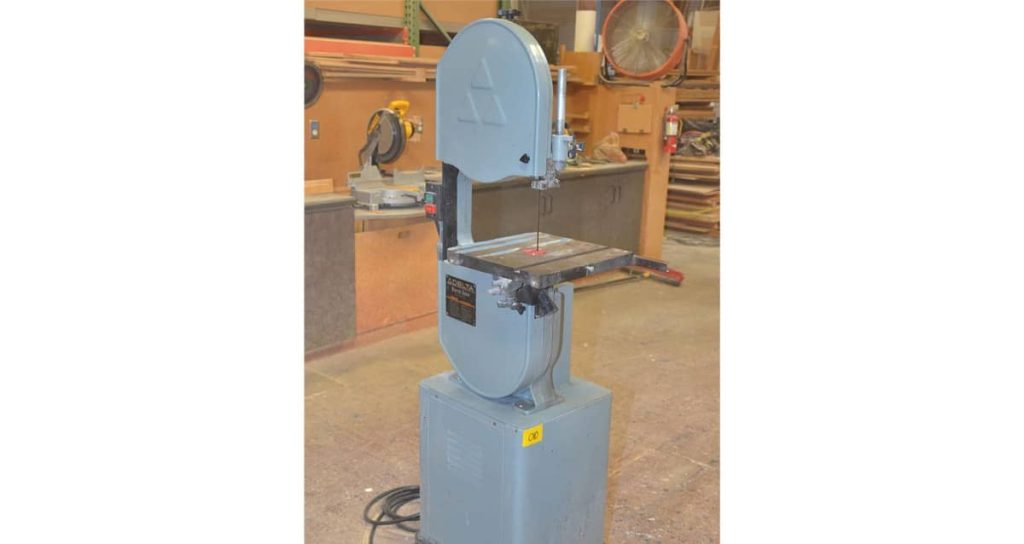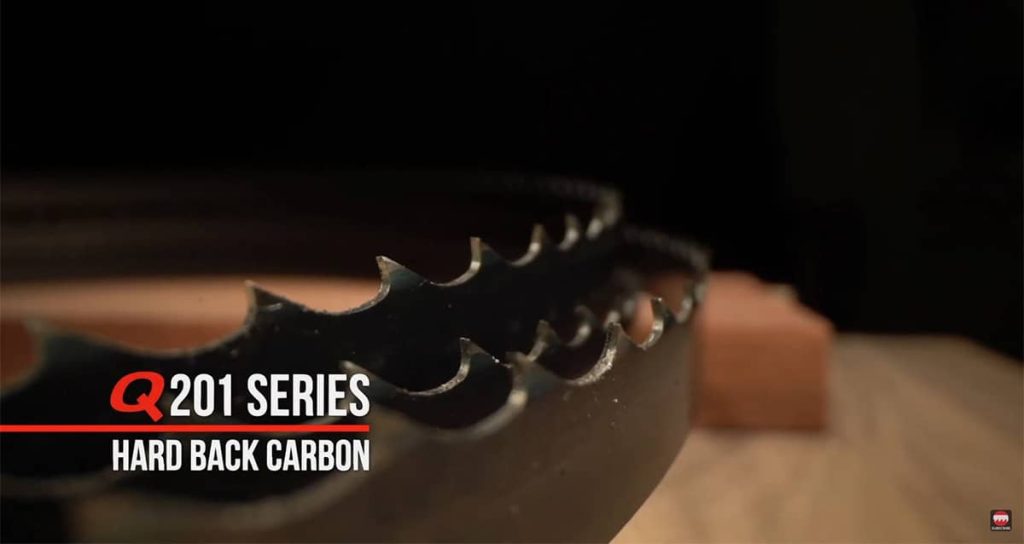Comparing Two Popular Delta Bandsaws
The Delta 28-206 and 28-203 are two widely respected models among woodworkers, each offering reliable performance and workshop versatility. While both are 14-inch bandsaws with a solid reputation for quality, they cater to slightly different needs. Understanding their distinctions can help you make the right choice based on your project demands and workspace setup.
Delta 28-206: Top Specs to Know
- Motor: 1 HP, 120/240V
- Throat Capacity: 13-3/4 inches
- Max Stock Height: 6-1/4 inches (12-1/4 inches with riser)
- Table Size: 16 x 16 inches
- Tilt: 45° right, 3° left
- Speeds: 2,500 / 3,300 SFPM
- Dust Port: 4 inches
- Weight: 250 pounds

Power and Precision in the 28-206
The Delta 28-206 offers dependable cutting capacity with a strong 1 HP motor, delivering consistent torque for both basic and demanding tasks. Its large, cast-iron table ensures stability during extended use, while dual speed settings let users fine-tune the saw for different materials.
Versatility of the Delta 28-203
Unlike the 28-206, the Delta 28-203 leans into accessibility. It features a durable cast iron frame and is capable of using blades from 1/8″ to 3/4″ wide, allowing it to handle everything from tight scroll cuts to light resawing. This model is also a favorite for users looking to integrate accessories like the Delta 14 Guide Kit.

Quick Technical Comparison
| Feature | Delta 28-206 | Delta 28-203 |
|---|---|---|
| Motor | 1 HP, 120/240V | 3/4 HP, 120V |
| Table Size | 16 x 16 inches | 15 x 15 inches |
| Max Stock Thickness | 6-1/4″ (12-1/4″ with riser) | 6″ |
| Blade Width Range | 1/8″ to 3/4″ | 1/8″ to 3/4″ |
| Speed Settings | Two (2,500 / 3,300 SFPM) | One fixed speed |
| Frame Material | Cast iron | Cast iron |
Choosing the Right Blade Size
The Delta 28-203 is built to accept a 93-1/2″ blade, which is a popular size compatible with a variety of tooth patterns and materials. Blade width flexibility allows this model to adapt easily from intricate work to wider cuts. Users can fit both carbon and bi-metal blades depending on the job.
Blade Options for the Delta 28-203
- Blade Length: 93-1/2 inches
- Width Range: 1/8″ to 3/4″
- Blade Types: Carbon and Bi-Metal
- TPI Range: 3 to 24
- Material Compatibility: Wood, plastic, light metals
Built for Versatility: Qsaw 101 Flex Back Carbon Band Saw Blade
If you’re seeking a reliable blade that performs across a range of applications, the Qsaw 101 Flex Back Carbon Band Saw Blade is a smart choice. Designed with versatility in mind, this blade handles everything from detailed scroll cuts in wood to clean slicing through plastics and low alloy steels. Available in coarse 3–6 TPI for woodworking tasks or fine 8–18 TPI for metals and plastics, it adapts to your cutting needs. Each tooth undergoes a precise hardening process, giving it a sharp edge and long-lasting durability. The spring-tempered backing adds rigidity for improved cut accuracy, while excellent chip evacuation and tooth set design help you maintain clean, fast, and smooth results. Whether used in home shops, portable woodmills, or stationary bandsaws, this blade delivers high performance at a budget-friendly cost per cut.

Engineered for Strength: Qsaw 201 Hard Back Carbon Band Saw Blade
The Qsaw 201 Hard Back Carbon Band Saw Blade brings added strength and accuracy to demanding sawing environments. Initially made for steel-cutting tasks, it now serves as a go-to solution for resawing wood and cutting through metals like brass, aluminum, and mild steel. Made from a single piece of high carbon steel, the blade features individually hardened tooth tips and a spring-tempered spine, allowing for straighter cuts under heavier feed pressures. With pitch options ranging from 2–6 TPI for resawing wood to 8–24 TPI for finer materials, it provides flexibility without sacrificing precision. Ideal for vertical, contour, and utility cutoff saws, this blade offers excellent chip clearance and delivers consistent surface finishes. If you need durability and accuracy at a cost-effective price point, the Qsaw 201 is a dependable pick.
Summary: Which Delta Saw Fits Best?
If your shop requires more power, speed flexibility, and a larger table, the Delta 28-206 is the better match. For hobbyists or those upgrading an older saw, the 28-203 remains a dependable option with wide blade support and accessory compatibility. Both machines have a long-standing reputation and are easy to maintain.
Looking for a Compact Bandsaw with Reliable Power?
If space is tight but performance still matters, take a look at the Hitachi CB6Y Bandsaw: Compact Power for Workshop Cutting. This article highlights why the CB6Y remains a favorite among users who need a small-footprint saw that doesn’t compromise on output. From its clean, controlled cuts to its solid build, you’ll see how this tool handles everyday tasks with ease. Ready to find out if it’s the right fit for your bench? Head over to the full review for the details.